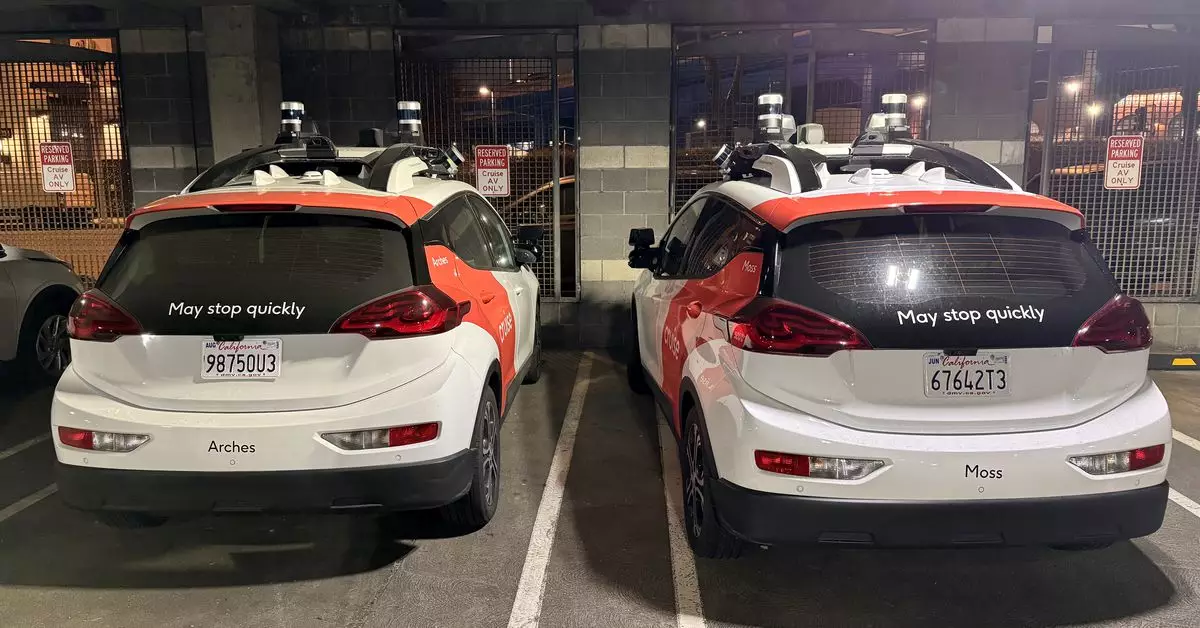Cruise, the autonomous vehicle (AV) subsidiary of General Motors (GM), continues to grapple with staggering financial losses, exacerbated by a recent operational hiatus. In its third quarter report for 2024, GM disclosed that Cruise incurred a loss of $435 million, which, while an improvement from the $791 million loss in the same period the previous year, still highlights the company’s precarious economic position. This financial predicament raises essential questions about the viability of Cruise in a rapidly evolving industry where technological advancements are coupled with high operational costs and a fiercely competitive landscape.
Cruise has been in a state of uncertainty since its operations were suspended on October 27, 2023, following a grave incident in San Francisco where one of its driverless vehicles hit and significantly injured a pedestrian. Although the company has slowly resumed testing vehicles in states like Arizona and Texas, the timeline for reinstating its commercial robotaxi services remains ambiguous. The lack of clear communication about when paid services will resume casts a shadow over Cruise’s operational strategy and raises concerns about its sustainability in the long run.
One of the intriguing aspects of Cruise is the level of transparency regarding its financial status, which is a rarity among its competitors in the autonomous vehicle sector. Having its financials disclosed separately in GM’s earnings reports allows for a distinct insight into Cruise’s operations. It revealed a total revenue of $26 million for the third quarter against expenses soaring to $442 million, resulting in an operating income loss of $417 million. These figures paint a grim picture, particularly when viewed against the backdrop of Cruise’s colossal loss of $3.48 billion in 2023, leading many to question its role within GM as merely a financial albatross.
The consistent financial drain has led some investors to urge GM executives to reconsider their strategy pertaining to Cruise, especially as other auto manufacturers retract from heavy investments in fully autonomous vehicle technologies. Despite the clamor from stakeholders for GM to possibly cut its losses, CEO Mary Barra remains optimistic about the future of autonomous vehicles, even as the deadlines for these projections drift further away.
In response to mounting losses and intensifying scrutiny, GM has undertaken significant restructuring within Cruise. Notably, the ousting of the founding team and the onboarding of seasoned professionals from both automotive and tech backgrounds suggest a fundamental shift in strategy aimed at rejuvenating the company’s fortunes. These changes indicate a newfound commitment to reevaluate the operational approach taken thus far, particularly following the cancellation of the ambitious Origin project, which intended to introduce a completely driverless shuttle system.
In addition to strategic leadership changes, Cruise has also implemented cost-cutting measures, including a substantial workforce reduction of approximately 25%. This realignment emphasizes a more disciplined approach to investment moving forward. Barra asserted the company’s intent to limit losses from Cruise to no more than $2 billion by 2025, signaling a more cautious financial outlook.
Despite her optimism, Barra’s declarations are met with skepticism, particularly in light of Cruise’s operational and financial hurdles. There are indications that GM might collaborate with external partners to mitigate the financial burden of maintaining an expansive fleet of driverless vehicles. This potential shift in the funding model underscores the complexities and high stakes involved in the race for autonomous vehicle technology, as evidenced by the struggles faced by even well-capitalized players like Waymo.
The road ahead for Cruise remains fraught with uncertainty. As competition intensifies and operational costs mount, the company must navigate not only the daunting technical challenges of deploying fully autonomous vehicles but also the financial realities threatening its long-term viability. The evolution of Cruise will serve as a crucial test case for the broader autonomous vehicle industry, marking either a resurgence or a cautionary tale. As stakeholders watch closely, the outcomes will not only shape the future for Cruise but potentially set the tone for how the world approaches autonomous transportation initiatives at large.


Leave a Reply